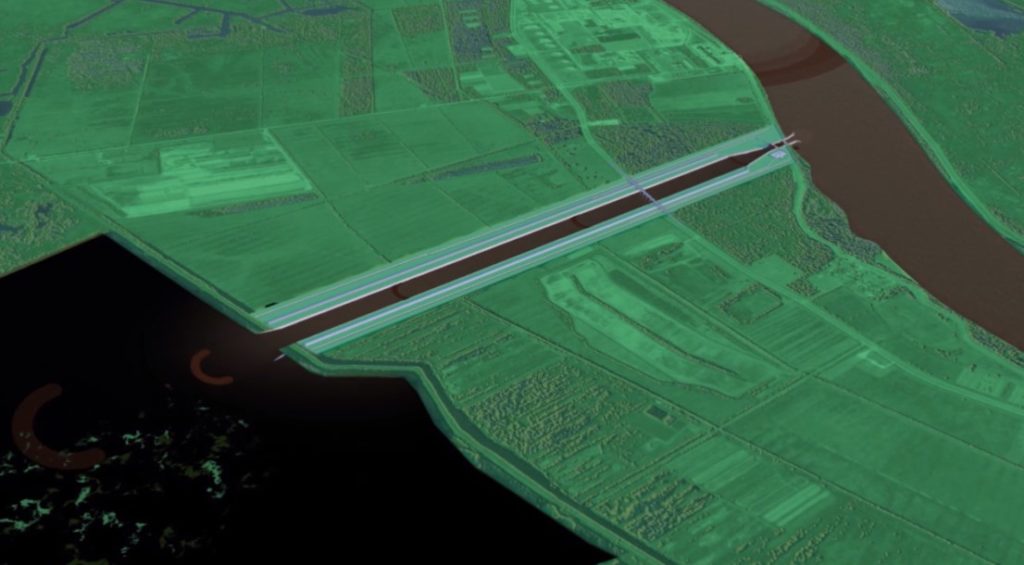UPDATE (6/2/21):
Read LWF’s official comments on the Mid-Barataria Draft EIS:
LWF Comments on MBSD DEIS_6.2.21
The Restore the Mississippi River Delta Coalition hosted informal public meetings with the Coastal Protection & Restoration Authority, the Louisiana Trustee Implementation Group, and Environmental Law Institute. These meetings gave some background information on the project. You can find the recordings here:
(April 30, 2021)
For decades, Louisiana has fought to protect and restore its rapidly disappearing coast. In 2010, The Deepwater Horizon oil spill exacerbated our coastal crisis. Barataria Basin, already suffering from degradation, was especially hard hit with land loss rates doubling or tripling after the oil spill.
For years, it has been clear that the single biggest thing we can do to offset some of the loss of our precious coast is to allow the Mississippi River to do what it’s done for thousands of years: build land with its sediment- and nutrient-rich water. For this reason, sediment diversions are a keystone project of Louisiana’s Coastal Master Plan.
The Mid-Barataria Sediment Diversion project will harness the natural power of the Mississippi River to divert over 300 million tons of sediment into rapidly-vanishing wetlands, restoring the health of the entire ecosystem and building and maintaining thousands of acres to buffer our region from more intense hurricanes and sea level rise. Without action, 80% of the basin’s marshes could be lost, threatening Louisiana’s communities, culture, livelihoods and abundant natural resources.
Recently, this project has hit a milestone that has been long-awaited. The U.S. Army Corps of Engineers (Corps) released a Draft Environmental Impact Statement (DEIS) and the Louisiana Trustee Implementation Group (LA-TIG) concurrently released a draft Restoration Plan. You now have the opportunity to help advance the largest and most important coastal restoration project in our nation’s history!
Today, YOUR voice is needed to support this critical project to protect our coast – our Sportsman’s Paradise – so that we can continue to live, work, and play in this place we are so lucky to call home.
Defend our coast. Protect our future. Take action today.
How you can help:
The Corps and LA TIG are now accepting your comments. For your convenience, we’ve drafted some basic supportive comments below. Simply copy and paste this message (editing it however you like) to the online comment portal here.*
(*Note: The comment portal is hosted on the National Park Service website. Don’t worry, you’re in the right place!)
To read more about these plans:
Read the Draft Environmental Impact Statement Executive Summary.
Read the Draft Restoration Plan (See pages 13-15 for Executive Summary).
——————————-
[Copy & Paste this message or submit your own version via the online portal, not in the comment section of this article. *Post comments here.*]:
Louisiana’s coast is critical to not only the people who live, work, and recreate here, but to the entire nation. World-class fishing attracts people from all over the world. Our ports are a major player in international trade. The nation’s energy needs are largely supported by the oil and natural gas industry located along our coast.
Our coast is disappearing. It’s vital that bold action is taken to help protect communities, businesses, and natural resources from the devastating effects of hurricanes, storm surge, and sea level rise. The single biggest thing that can be done to help mitigate some of this loss – and address this crisis – is to allow the Mississippi River to do what it’s done for thousands of years: build land with its sediment and nutrient-rich water.
In 2010, The Deepwater Horizon oil spill exacerbated our coastal crisis and severely impacted wildlife that depend on our estuaries. Approximately 95% of the marsh oiling along the Gulf occurred in Louisiana – the heaviest of that oiling was in the Barataria Basin. Already suffering from degradation prior to the spill, the basin was especially hard hit with land loss rates doubling or tripling after the oil spill. Without the Mid-Barataria Sediment Diversion (MBSD) project, this basin’s estuary will collapse.
A problem of this magnitude requires innovation. The MBSD project is one of the largest environmental infrastructure projects in the history of the United States. Reconnecting the Mississippi River to the Barataria Basin will maintain vital wetlands and restore the health and vitality of the entire ecosystem.




Please save our coast
If the diversion project is not completed highway 23 will no longer exist.
Let the Mississippi River do what it wants to do—deliver sediment! Support the Mid-Barataria Sediment Diversion. Thank you!